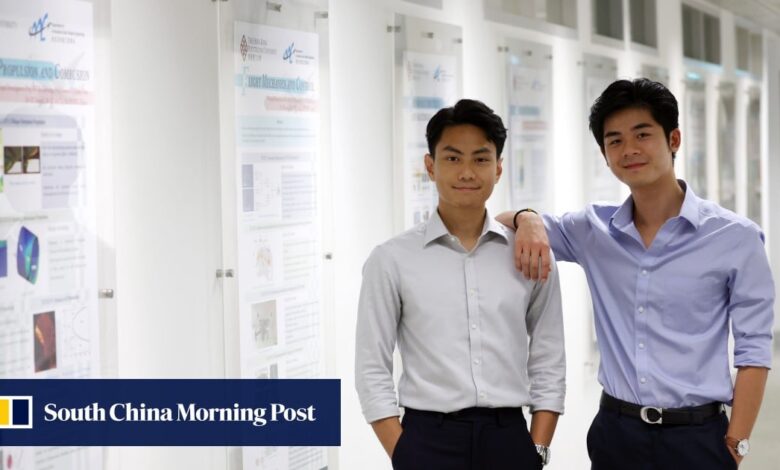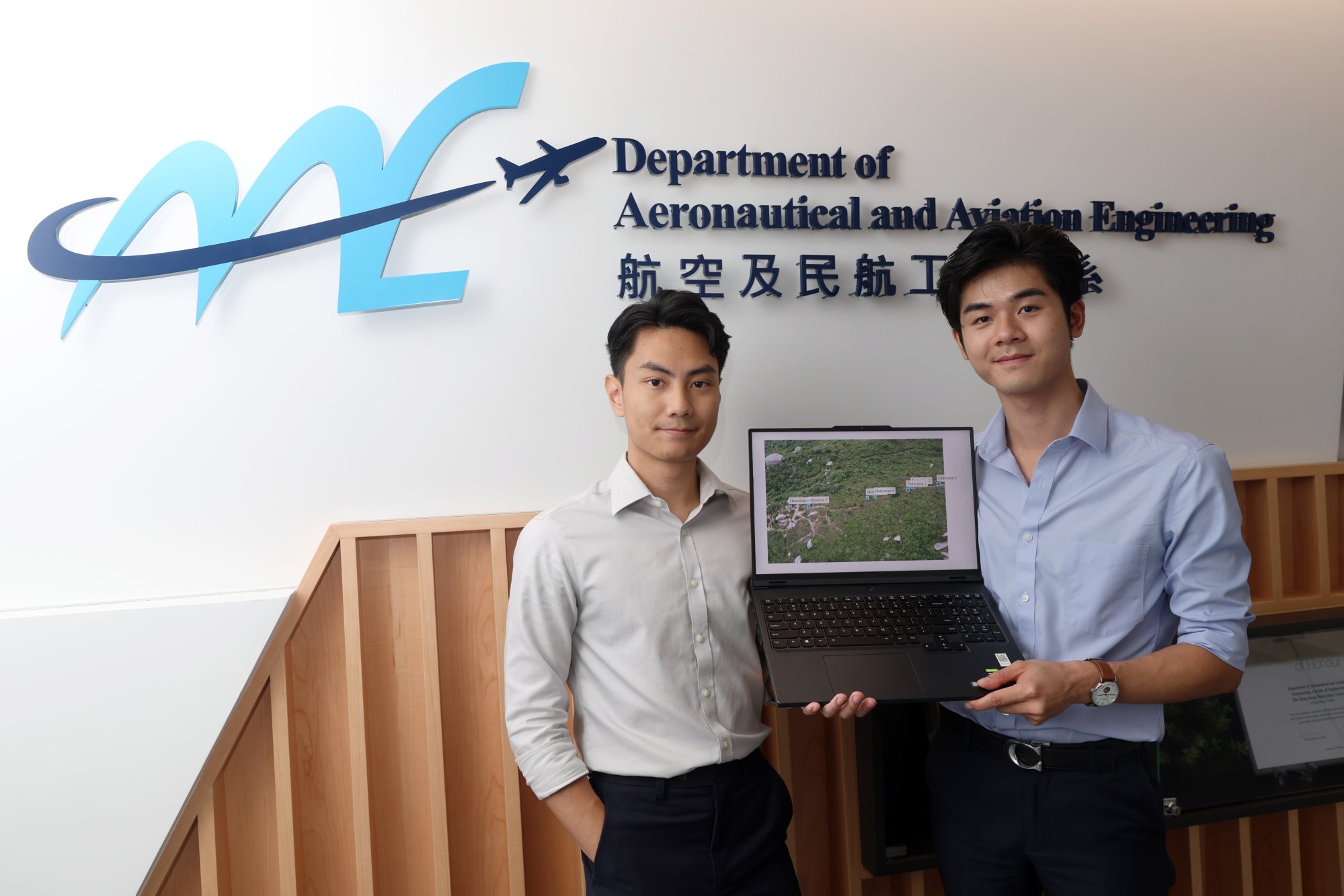Hong Kong aviation engineering high-fliers get down to earth to help rescue teams find lost hikers

[ad_1]
High-flying Hong Kong aviation engineering graduates who launched a start-up to pioneer an artificial intelligence (AI) programme to assist in spotting signs of missing hikers in drone images helped speed up the massive effort to rescue a lost 17-year-old boy.
The AI technology developed by Polytechnic University’s Max Lee Jwo-lem and Josua Chan Wing-hei slashed the time needed to decode drone images by two-thirds as rescuers could now sift through analysed images with grids that pinpointed locations of clothing traces and silhouettes, they explained on Thursday.
Search teams previously had to manually scan through thousands of pictures showing dense foliage.
“I think it’s really great that we’re translating what we learned from our major and translating this knowledge into application to actually potentially save lives,” said Lee, who is studying for a PhD degree at the university’s department of aeronautical and aviation engineering.

The pair, both 25, formed a start-up called LifeSparrow Solutions and teamed up with the Fire Services Department to develop a tailor-made AI programme for rescue drones.
The software was used in the search for missing Matthew Tsang Hin-chit, 17, who was found about 100 metres (328 feet) from a hiking trail in Ma On Shan Country Park on Wednesday after he had been missing for seven days.
The pair turned entrepreneurs in 2020, the year they graduated, after the coronavirus crisis caused a massive slump in the aviation industry.
They started their project in July last year after they heard firefighters wanted to improve their search-and-rescue abilities through a mentor’s introduction.
Lee said firefighters had to physically look through almost 10,000 drone images from approximate locations to find missing or trapped hikers.
Hong Kong teen missing for week ‘ate leaves and drank stream water’ to survive
Hong Kong teen missing for week ‘ate leaves and drank stream water’ to survive
Although officers would only spend about five seconds on each picture, the vast amount of information that had to be processed meant hours or days of work, he said.
But with the algorithm developed by Lee, the time spent on each image can be cut to about two seconds, with evidence of clothing and silhouettes highlighted in grids to make searches easier.
Lee said a trial run on 500 images showed the technology could detect 97 people out of 100.
Chan added he went on around 25 hikes with a friend last summer to collect information on the city’s wide variety of terrains.
He said they headed for areas suggested by rescue teams and mimicked lost hikers by crouching on the ground in the fetal position or lying flat out. They also used changes of clothes to check the algorithm’s ability to handle different colours.
Drones and AI, 300 people, 4 miles, 7 days: how Hong Kong rescuers found missing teen
Drones and AI, 300 people, 4 miles, 7 days: how Hong Kong rescuers found missing teen
Chan added the experience added weight to the work as the hikes improved the team’s understanding of the difficulties rescuers faced, which helped forge a connection between the developers and the men and women on the front line.
“We really learned more about how we’re actually translating our technology into real-life applications instead of it being just a theory,” he said.
Chan and Lee said they were happy to see their work used for search and rescue and every successful mission made them feel proud.
“We’re just very glad we’re capable of helping out in these critical situations,” Chan said.
Lee said he hoped to expand the abilities of the programme to work with infrared sensors, Wi-fi and other technology used in search and rescue.
[ad_2]
Source link





